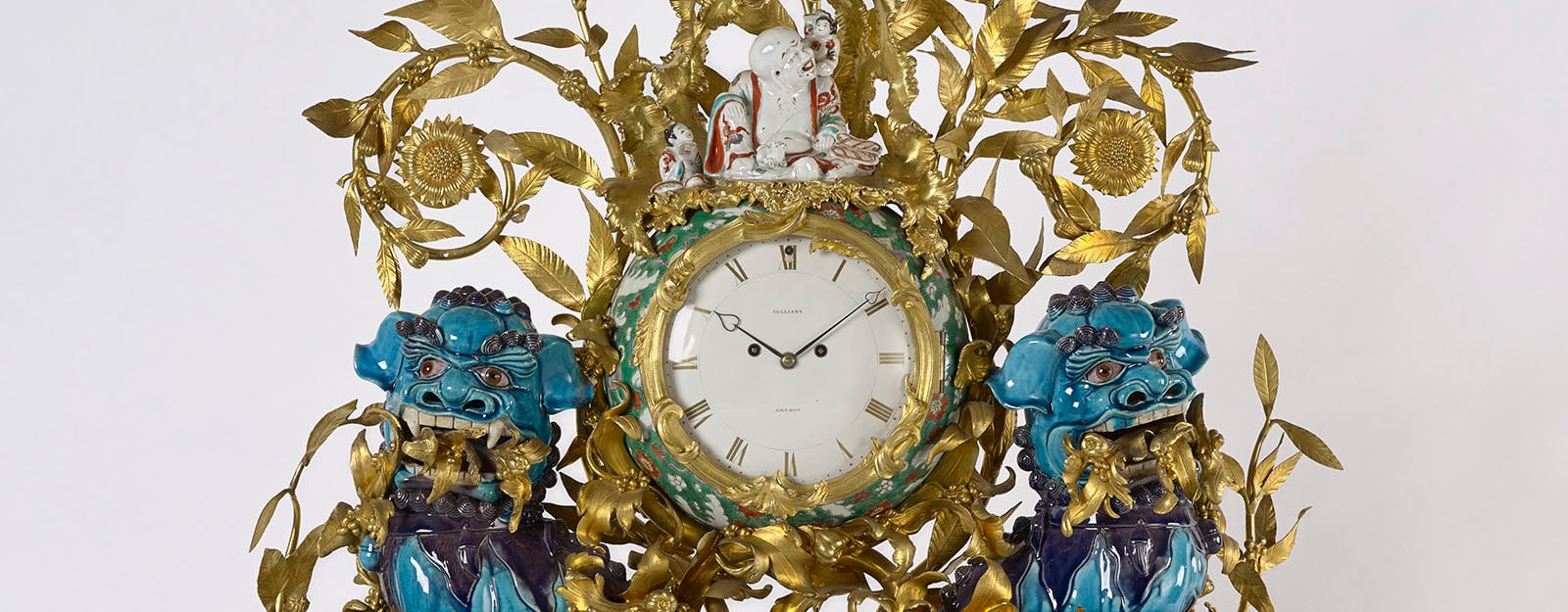
A Prince's Treasure
120 objects from the Royal Collection return to the Royal Pavilion in Brighton
INDIA
Set of side chairs
c. 1770Sandalwood veneered with ivory, engraved and inlaid; silk | 99.0 x 62.0 x 60.5 cm (largest of members) | RCIN 487
Set of fourteen sandalwood side-chairs; each veneered with carved and inlaid ivory, drop in seat, pierced back, cabriole legs with ball and claw feet. Ivory decoration includes leaf trails, flower sprigs and oriental monster heads, fangs highlighted in red. Seat pad upholstered in crimson silk.
No fewer than fifty pieces of Indian furniture and boxes appear in the catalogues of Queen Charlotte’s posthumous sales. A large proportion of what must have been the largest concentration of such exotica in late eighteenth-century Britain came in the form of gifts. While travelling in Buckinghamshire in October 1781 the King stopped at Westhorpe House near Marlow, the home of the recently deceased Alexander Wynch (Governor of Madras 1773-5), and was shown a quantity of ivory furniture by the auctioneer James Christie. The King purchased a settee, ten chairs and two miniature bureau-cabinets, all of the same type. The Queen subsequently added a further settee, six more chairs and two corner chairs. At the sale of her effects in 1819 the Prince Regent purchased the entire, augmented set for his use at Brighton Pavilion. This type of furniture was made in some quantity in Vizagapatam, on the eastern coast of India. The shapes were probably copied from existing English-made furniture rather than from the engraved designs in publications such as Thomas Chippendale’s Gentleman and Cabinet-Maker’s Director, which first appeared in 1754. The Royal Collection chairs and others of the same type are usually dated around 1770; however, an ivory-veneered armchair of much the same design but with far less engraved decoration and dated 1759 was sold anonymously in 1980 (Christie’s, London, 19 June 1980, lot 26).
Adapted from George III & Queen Charlotte: Patronage, Collecting and Court Taste, London, 2004
In 1819 they were acquired by George IV, then Prince Regent, for the decoration of the Brighton Pavilion, and they appear in Nash's view of the Long Gallery, c.1824. In October 1838 they were repaired and cleaned.







